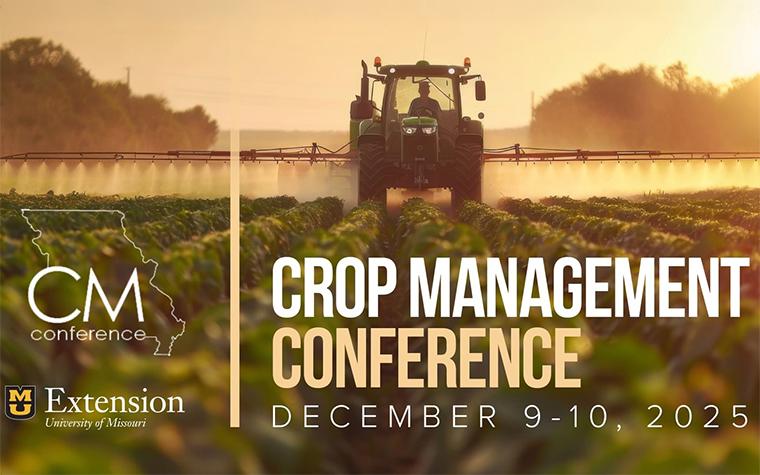
Waterhemp, the weed that won’t go away
For a quarter of a century, MU Extension weed scientist Kevin Bradley has warned farmers about waterhemp and its ability to develop resistance to herbicides. Bradley continues his call for diversity in weed management at the 2025 Missouri Crop Management Conference, Dec. 9-10 in Columbia.
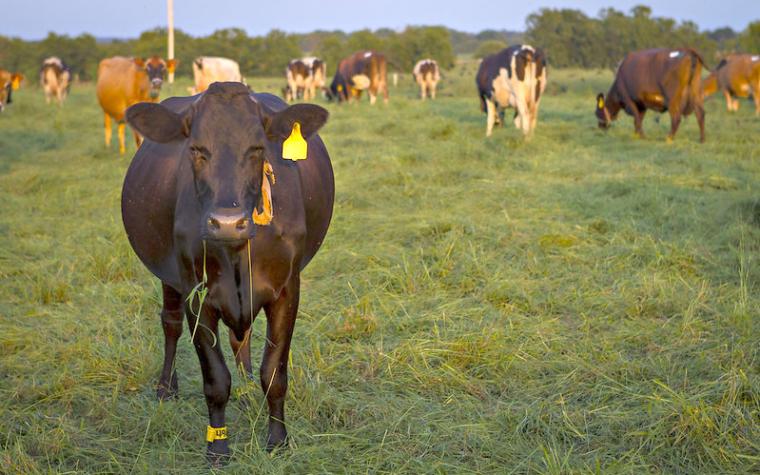
Beef cattle producers meeting set for Dec. 11 in Nevada, Mo.
Understanding financial tools that are available to cattle producers is helpful in planning for operational success in the future. MU Extension is partnering with FCS Financial to provide a cattle producers meeting to cover these topics 6 p.m. Thursday, Dec. 11, at the Vernon County Fairgrounds Centennial Hall in Nevada.

New forage budgets help Missouri farmers plan for 2026
Updated 2026 forage-budget tools help Missouri producers estimate costs, yields and break-even prices for alfalfa, corn silage and native warm-season grasses.

Cattle grading, feeding and marketing workshop set for Dec. 9 in Lamar
MU Extension is partnering with the Show Me Youth Ag Academy, Missouri State University and ACRISURE-Gibson Insurance to hold a Feeder Cattle Grading, Feeding and Marketing Workshop 6 p.m. Tuesday, Dec. 9, at the Lamar First Baptist Church.

Learn how to improve soil health at Crop Management Conference
Learn practical strategies to improve soil health using cover crops at the 2025 Crop Management Conference in Columbia.
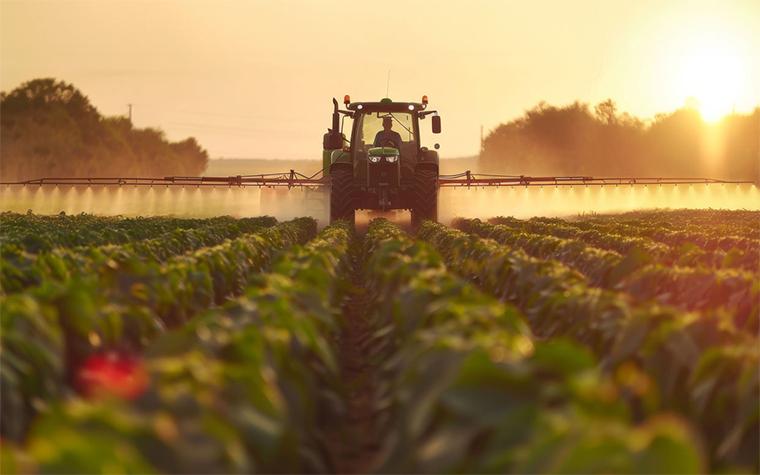
Register for the Missouri Crop Management Conference
Registration is open for the state’s premier agricultural conference for farmers and ag industry professionals, the Missouri Crop Management Conference, Dec. 9-10 in Columbia.
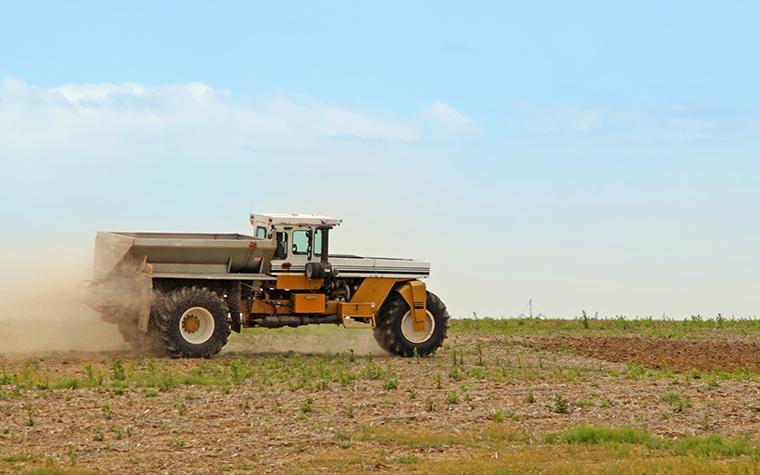
Is the 'going rate' going up?
Farmers and agricultural service providers across Missouri are invited to participate in University of Missouri Extension’s Custom Rates Survey. This triennial survey helps shed light on the costs associated with custom farming operations such as tillage, planting, spraying, harvesting, land management work and machinery rental.
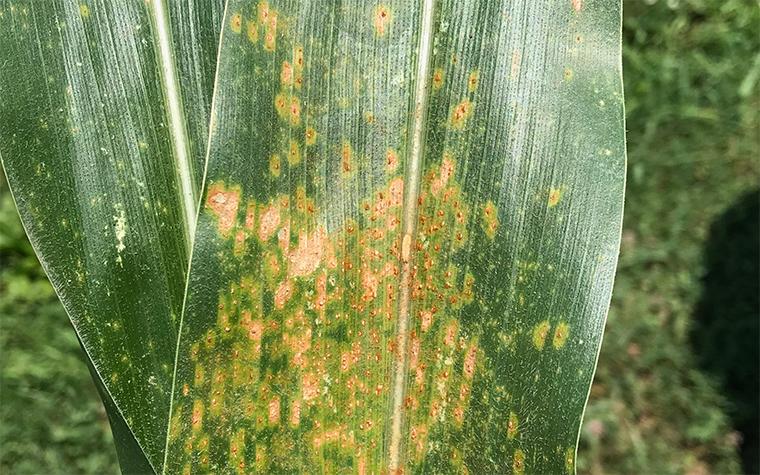
Southern rust can affect nutrient value of winter feed
Southern rust, a fungal disease, can reduce nutrients and lower digestibility in infected corn fed to livestock, says MU Extension agronomist Nick Wesslak. Early dry down caused by southern rust can cause problems with proper silage packing, which increases risk of poor fermentation and higher mold and yeast populations.
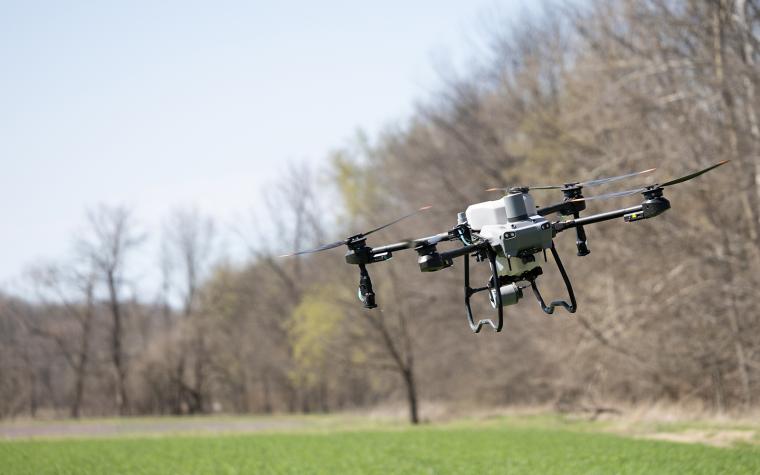
Seeding cover crops aerially can boost grazing potential
MOUNT VERNON, Mo. – Stored hay can be a livestock producer’s best insurance, says University of Missouri Extension plant science specialist Caleb O’Neal, who is also a cattle producer. It provides flexibility for cattlemen to rest pastures in the event of drought and is often the feed of choice for winter herd maintenance.
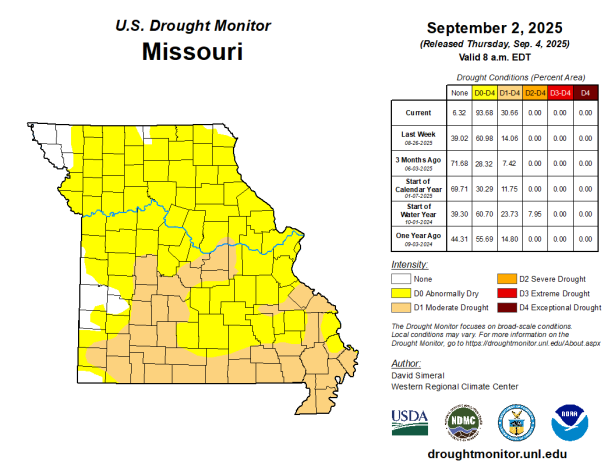
More than 90% of state in drought as harvest nears
As harvest nears, MU Extension agronomists see signs of flash drought threatening Missouri crop yields. The U.S. Drought Monitor map for Missouri released on Sept. 4 shows that 93.68% of Missouri is at least abnormally dry following an unusually wet spring.
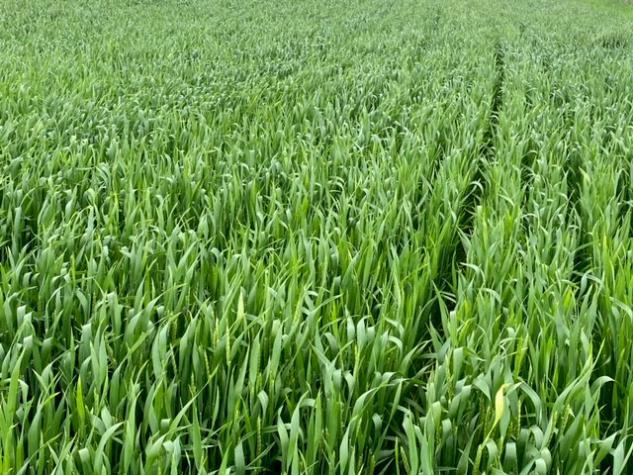
Fall is prime time to establish cool-season forages
Fall offers the best opportunity to establish or renovate cool-season forages like tall fescue, orchardgrass and winter annuals such as brassicas, oats, wheat, rye and triticale. With strong cattle prices and improved cash flow, now is a smart time to invest in your forage base.
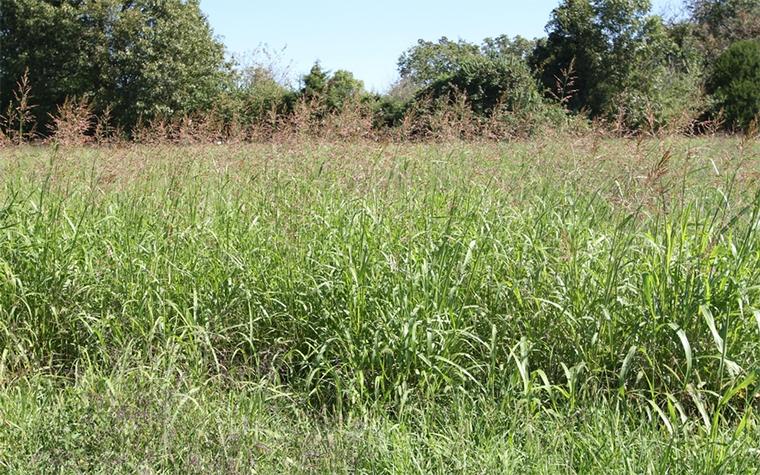
Johnsongrass appears in NW Missouri crops, pastures
Johnsongrass is spreading in northwest Missouri's crops and pastures. Experts recommend early fall herbicide applications and integrated control methods.
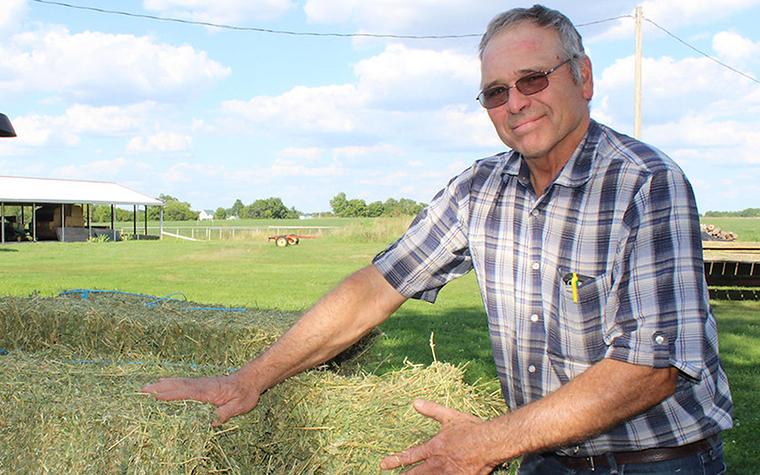
Ozark Empire Fair Hay Show draws 49 entries
Missouri hay producers showcased their work at the Ozark Empire Fair Hay Show, featuring 49 entries from 30 participants, highlighting top-quality hay.
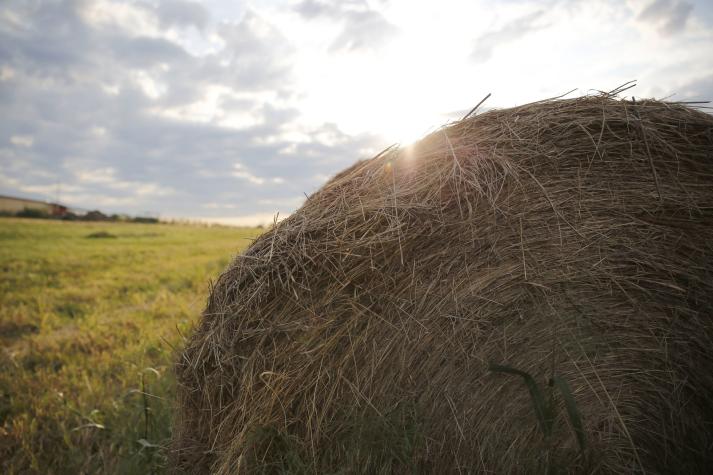
10 reasons you should quit making hay
High equipment costs, time constraints, and soil degradation make hay production less profitable. Explore alternatives like grazing and stockpiling forage.
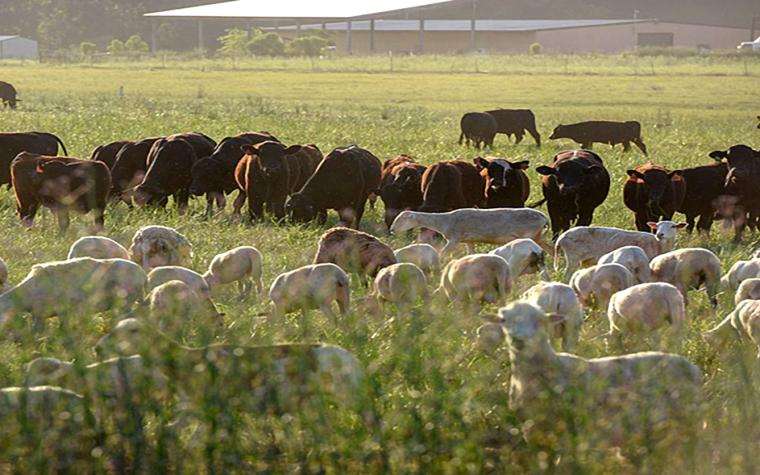
Cattle and forage management for grazing success
Implement strategies to improve cattle and forage management for year-round grazing success.
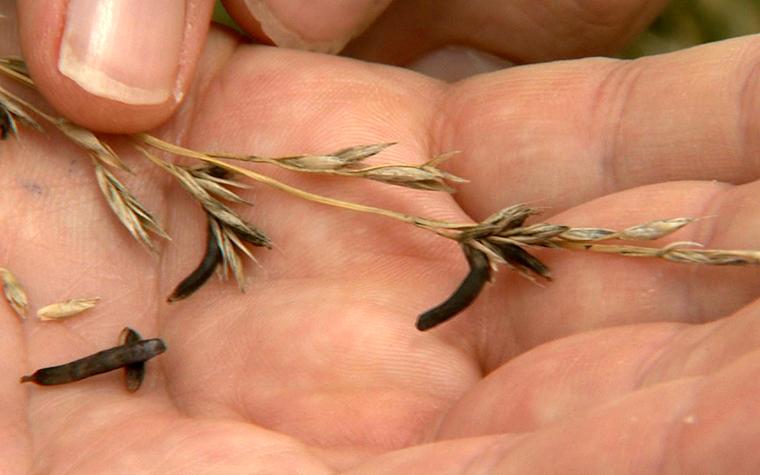
Making hay to reduce ergot infestation
Learn how to manage ergot infestations in pastures to protect livestock health. Tips on mowing, haymaking, and recognizing symptoms of ergot poisoning.
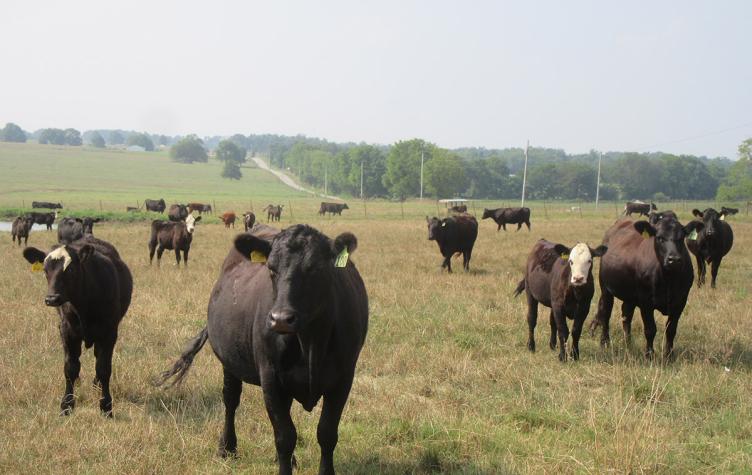
Tall fescue adds to heat stress in cattle
Cattle rid their bodies of heat in three ways: radiation, convection and evaporation. “If your cattle can’t use all three methods, they’ll overheat fast,” says University of Missouri Extension state beef nutrition specialist Eric Bailey. Summer heat knocks weight off calves and pounds off milk, Bailey says. “Heat stress costs real money.”
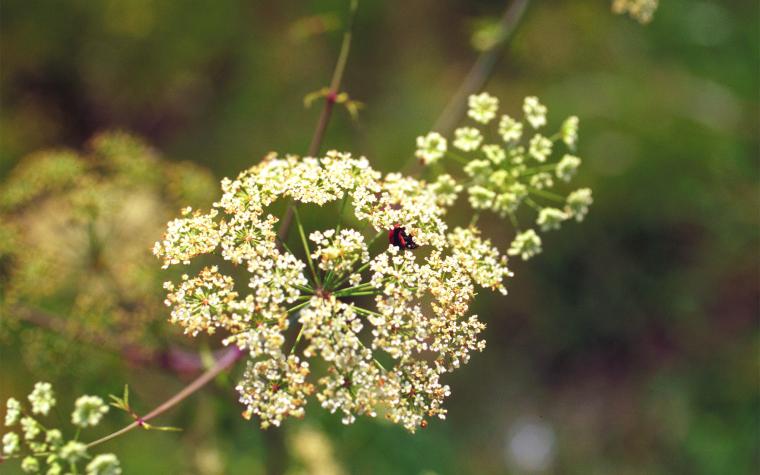
Mow or spot spray poison hemlock now
Poison hemlock, a plant that can kill livestock, is flowering and setting seed now in much of Missouri. While early control is recommended, it still can be managed with spot treatments or mowing, says Kevin Bradley, University of Missouri Extension weed scientist. It grows in ditches, roadways, fencerows, occasionally in pastures or hayfields that aren’t mowed regularly, and sometimes in no-till cropping systems.

Use a grazing strategy to get more grass from pastures
Compared to other parts of the agricultural community, graziers of cattle depend less on fossil fuel and more on solar energy to turn a natural resource like grass into a sellable commodity, says University of Missouri Extension agronomist Tim Schnakenberg. Graziers can save on operating expenses and provide quality feed to meet nutritional needs by allowing cows to do selective harvesting.
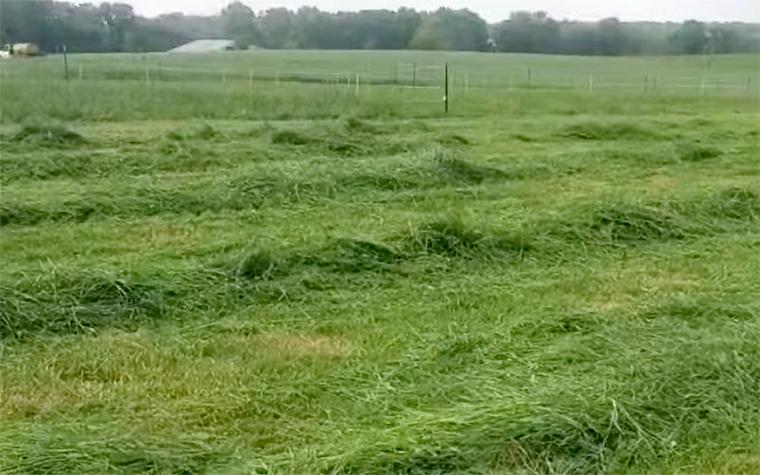
Three days to hay with a minor change
LINNEUS, Mo. – May’s precipitation has made haymaking challenging when rain is frequent and sometimes unpredictable, but University of Missouri Extension state forage specialist Carson Roberts has a tip to help hay dry down quicker. Roberts turns the knob to set the swath boards on the swather to the widest setting.

Make hay in May for best quality, yield
Cutting hay in May boosts quality and yield. Harvest before seed develops and store properly to preserve nutrients and minimize losses.
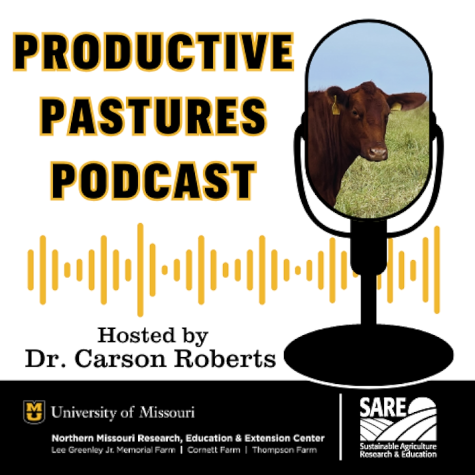
MU forage specialist begins new podcast
A forage specialist launches a podcast sharing tips on pasture management, livestock production, and improving forage systems.

Produce high-quality hay to reduce cattle supplementation
STOCKTON, Mo. – “Hay harvest is approaching, and producing high-quality hay reduces cattle supplementation,” says Patrick Davis, University of Missouri Extension livestock field specialist. Davis discusses harvest management strategies to achieve optimal hay quality.
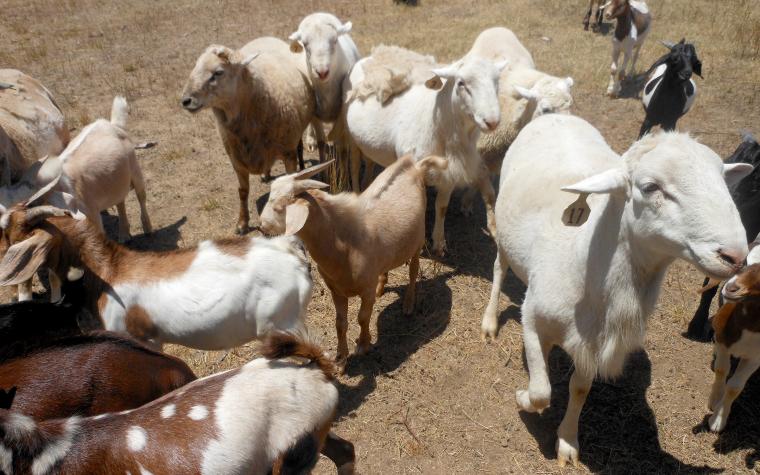
Controlling sheep and goat parasites through forage management
Learn how grazing systems, high-quality forages, and integrated strategies help manage internal parasites in sheep and goats.
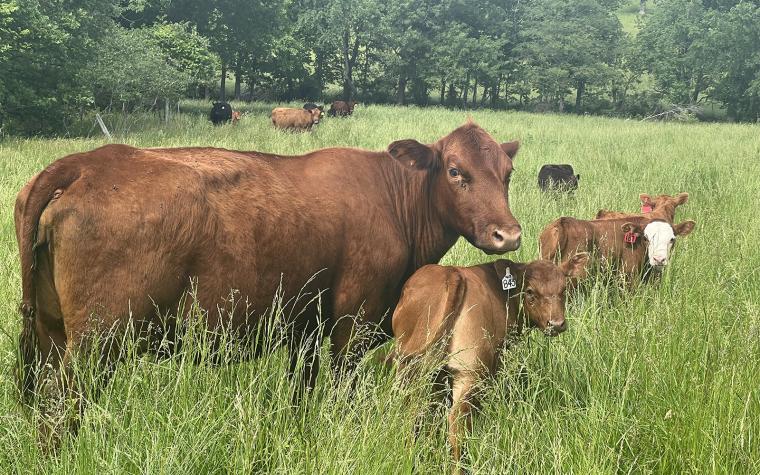
Plan for drought by choosing the right forage plan
Choose drought-resilient forages and legumes to maintain productive pastures and reduce feed costs during dry summers.